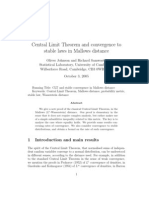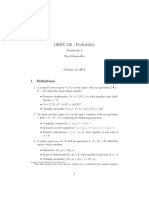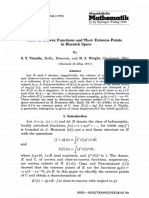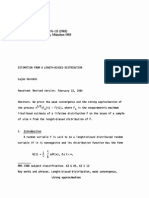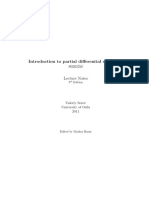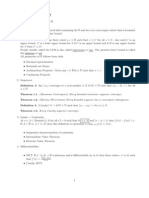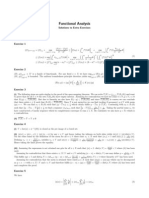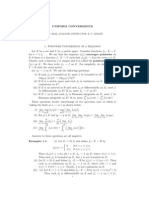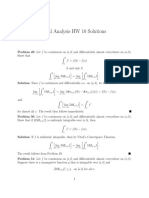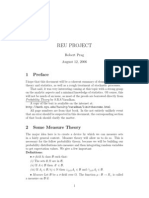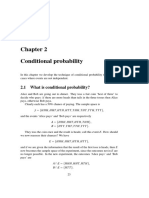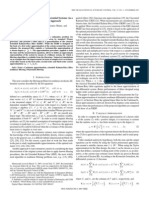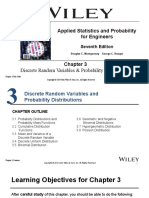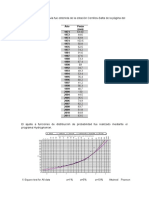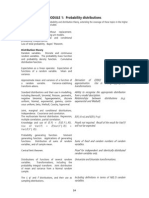0% found this document useful (0 votes)
154 views3 pagesKolmogorov-Smirnov Distance
This document discusses several statistical distances and properties related to convergence in distribution. It introduces the Kolmogorov-Smirnov distance for probability measures on the real line. It also discusses total variation distance and Wasserstein distance. It states that all three distances are stronger notions of convergence than weak convergence. The document also presents a lemma relating Kolmogorov distance and Wasserstein distance when one random variable has a bounded density. Finally, it introduces Stein's lemma, which relates the expectation of a random variable Z multiplied by a function f(Z) to the expectation of the derivative of f(Z) when Z is standard normal.
Uploaded by
Costanzo ManesCopyright
© © All Rights Reserved
We take content rights seriously. If you suspect this is your content, claim it here.
Available Formats
Download as PDF, TXT or read online on Scribd
0% found this document useful (0 votes)
154 views3 pagesKolmogorov-Smirnov Distance
This document discusses several statistical distances and properties related to convergence in distribution. It introduces the Kolmogorov-Smirnov distance for probability measures on the real line. It also discusses total variation distance and Wasserstein distance. It states that all three distances are stronger notions of convergence than weak convergence. The document also presents a lemma relating Kolmogorov distance and Wasserstein distance when one random variable has a bounded density. Finally, it introduces Stein's lemma, which relates the expectation of a random variable Z multiplied by a function f(Z) to the expectation of the derivative of f(Z) when Z is standard normal.
Uploaded by
Costanzo ManesCopyright
© © All Rights Reserved
We take content rights seriously. If you suspect this is your content, claim it here.
Available Formats
Download as PDF, TXT or read online on Scribd
/ 3




